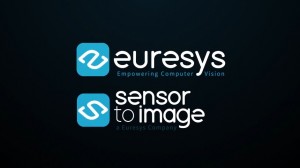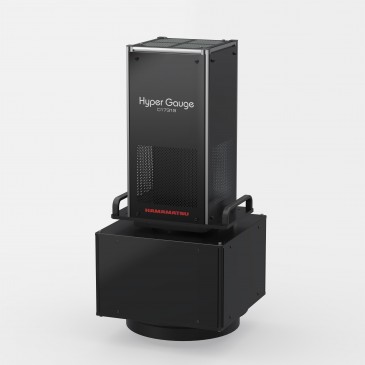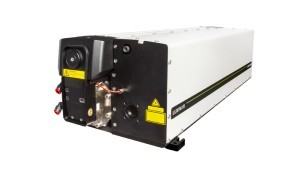
A research study titled "3D Printing Medical Devices Market by Component, Technology, Application, and End User — Global Industry Analysis and Forecast to 2025,” published by Crystal Market Research, states that the 3D printing medical devices market is projected to be around $9.8 billion by 2025.
3D printing applications in healthcare industry are booming
3D printing can be used to make 3D printed models of patients' organs to plan and practice complex surgeries. It is a relatively new and rapidly expanding field. It finds numerous applications in different industries such as automotive, defense, healthcare and aerospace. The applications of 3D printing in healthcare industry are booming. It offers several benefits, such as the customization of implants and prosthetics, rise in productivity and cost-effectiveness. Moreover, scientists have undertaken large number of research activities to find out how 3D printers can be used to develop living organs such as liver and heart. However, it is in very early stage of development.
Powder bed fusion (PBF)
Powder bed fusion (PBF) is the most common technology used for 3D printing medical devices. PBF technology works with different materials (such as nylon and titanium) that are used in medical devices. PBF builds a 3D product from plastic or metal powder by pouring onto a platform. PBF adopts different printing techniques such as electron beam melting (EBM), selective laser sintering (SLS), and selective laser melting (SLM), direct metal laser sintering (DMLS), and selective heat sintering (SHS).
Browse full research report with TOC: "3D Printing Medical Devices Market By Component, Technology, Application, And End User - Global Industry Analysis and Forecast To 2025"
SLS powder-based 3D printing market: Largest share
The selective laser sintering (SLS) powder-based 3D printing market accounted for the largest share of the 3D printing medical devices market in 2016, due to its ability to produce highly durable parts; it does not require the support structures which protects the design from falling during production. Orthopedic implants market held the largest share of the overall market in 2016, as 3D printed medical devices are largely adopted for orthopedic applications. Hospitals segment dominated the global market in 2016, as large number of surgeries requiring 3D printed medical devices are conducted in hospitals.
US largest North American 3D printing medical devices market
The US held the largest share of the North American 3D printing medical devices market in 2016. This can be attributed to factors such as high adoption of 3D printing technology along with emphasis on research and development initiatives. Likewise, Japan accounted for a majority of the Asia-Pacific market for 3D printing medical devices, due to rising awareness about 3D printing technology for medical devices and government initiatives to support developments in 3D technology.
Key players
Some of the major companies in the global 3D printing medical devices market are Arcam, 3D Systems, Stratasys, Cyfuse Biomedical, EOS Electro Optical Systems, Organovo Holdings, SLM Solutions Group, FabRx, Envision TEC and Bio3D Technologies. Technological advancement is the primary strategy adopted by key players operating in the 3D printing medical devices market. For instance, in May 2016, Stratasys, a 3D printing and additive manufacturing solutions company launched the world's first full-color, multi material 3D printer, the J750. This system enables the customers to mix and match full color gradients with a wide range of materials.
Key findings of the research study
- Plastics segment accounted for more than two-third share of the global market in 2016.
- Polymers segment accounted for over one-third share of the overall market in 2016, due to their primary use in bio-model printing.
- North America dominated the global 3D printing medical devices market in 2016, holding over one-third share of the market, owing to the presence of advanced healthcare infrastructure and highly sophisticated research and development facilities.
- Europe is anticipated to be the second fastest growing 3D printing medical devices market registering a double digit growth rate over the forecast period.
- India and China are projected to witness robust growth during the forecast period, due to high patient population and increase in need for advanced health care services due to growing disposable income.
3D printing medical devices market segmentation
By component
3D Printing Equipment
- 3D Printers
- 3D Bioprinters
Materials
Plastics
- Thermoplastics
- Photopolymers
Biomaterial inks
Others
- Polymers
- Ceramics
- Hydrogels
- Paper
- Wax
- Nylon
Metals and Alloys
Services and Software
By technology
Droplet Deposition (DD)
- Low-temperature Deposition Manufacturing (LDM)
- Multiphase Jet Solidification (MJS)
- Fused Deposition Modelling (FDM)
Photopolymerization
- Stereolithography
- Digital Light Processing
- Two-photon Polymerization
Laser Beam Melting Technology (LBM)
- Selective Laser Melting (SLM)
- Laser CUSING
- Direct Metal Laser Sintering (DMLS)
- Selective Laser Sintering (SLS)
Electron Beam Melting Technology (EBM)
Three-dimensional Printing (3DP)
By application
Cranio-maxillofacial Implants
Orthopedic Implants
Dental Implants
Internal and External Prostheses
By end user
Hospitals
Ambulatory Surgical Centers
Diagnostic Centers
Academic Institutions
Biotech and Pharma Companies
By region
North America
- US
- Canada
- Mexico
Europe
- Germany
- France
- UK
- Italy
- Spain
- Rest of Europe
Asia-Pacific
- Japan
- China
- Australia
- India
- South Korea
- Rest of Asia-Pacific
Rest of the World
- Brazil
- South Africa
- Saudi Arabia
- Turkey
- United Arab Emirates
- Others.




































 Back to News
Back to News

























